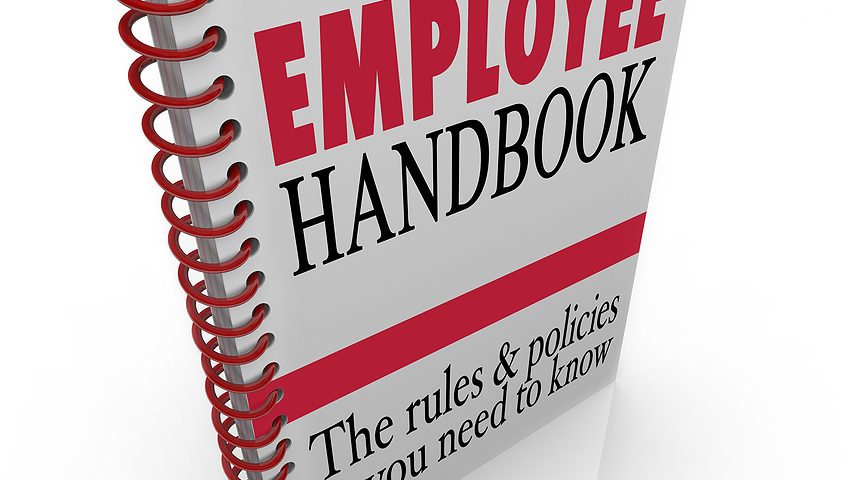What’s wrong with not having an Employee Handbook?
- Home
- HR News & Views
- Talent Management
- What’s wrong with not having an Employee Handbook?
The short answer is that while there are many laws that require notifying employees of specific workplace rights, there are no federal, state, or local laws that specifically require an employer to have an employee handbook, and lots of companies choose not to have one. For the following reasons, though, and based on my 25+ years in human resources, I recommend drafting an employee handbook.
- Keep your employees informed – Help them find quick answers to questions like holidays, vacation, insurance options, compensation, payroll deductions, tracking of time and attendance, overtime rules, and your performance management/promotion process.
- Clarify expectations – List specific company policies you expect employees to follow. Provide clarity with the following: social media usage, mobile device use, dress code, ethics, conduct expectations, intellectual property, business travel, and your discipline process.
- Mitigate risk – Provide information on employee rights and expectations that comply with federal, state, and local compliance regulations.
- Demonstrate your culture – While parts of your employee handbook satisfy compliance requirements, most of the content you provide should be consistent in style reflect your culture. Describing your values and expectations will be appreciated by both your new and existing staff.
I recommend you start by taking time to draft what you find most important about your organization. What existing policies or needed updates reflect your vision? What expectations do you have of your employees that will support reaching your goals? What employee behaviors might derail your expectations? Draft a brief organization history and include your mission statement and values. This will set the tone for the entire document.
Regarding Internal Policies – Be careful not to over-engineer your internal policies to the point where you get to a state of policy paralysis. I have always been an advocate of the minimal amount of internal policies that drive safe and effective results. Depending on the issue, employee discretion (and creativity) might be a better solution than a policy.
At this point, you need to decide if you are going get help from your human resources team, an employment attorney, or human resources consultant (like IgnitionHR). If you decide to draft it yourself, I recommend you first cover your bases from a compliance perspective. It is important that you meet requirements of federal, state, and any local laws. Most federal requirements can be found by researching the U.S. Department of Labor website. You will also need to research and document any state and local regulations that apply to your workforce. Keep in mind that you must comply with regulations in each jurisdiction (include home offices) where your employees work. You can find employee handbook templates at The Society for Human Resources Management. I also recommend you research publications at WorldatWork.
It is a best practice to review your employee handbook yearly to make sure you are up to date on any internal policies as well as federal, state, or local compliance changes. If you have questions, IgnitionHR can help. Just click HERE to schedule an introductory call.






